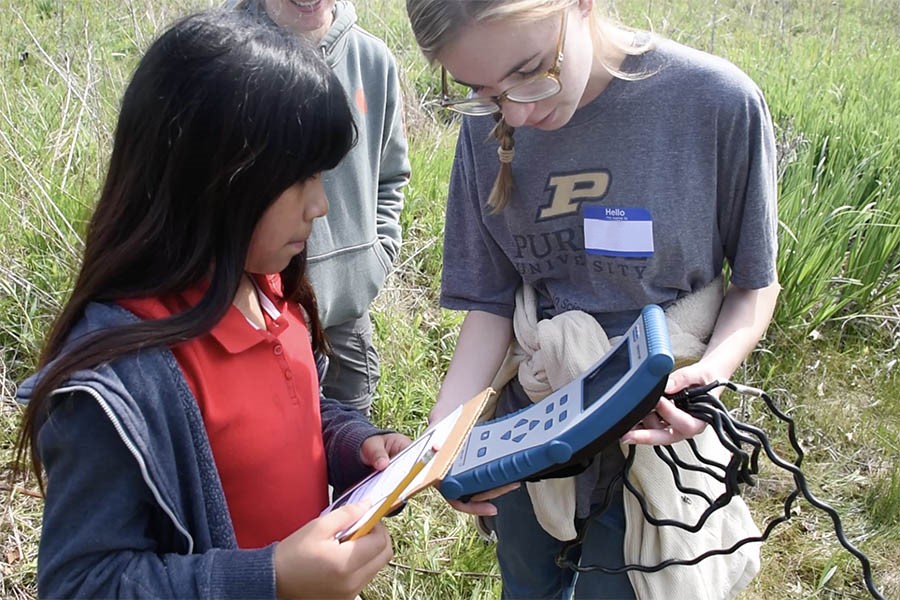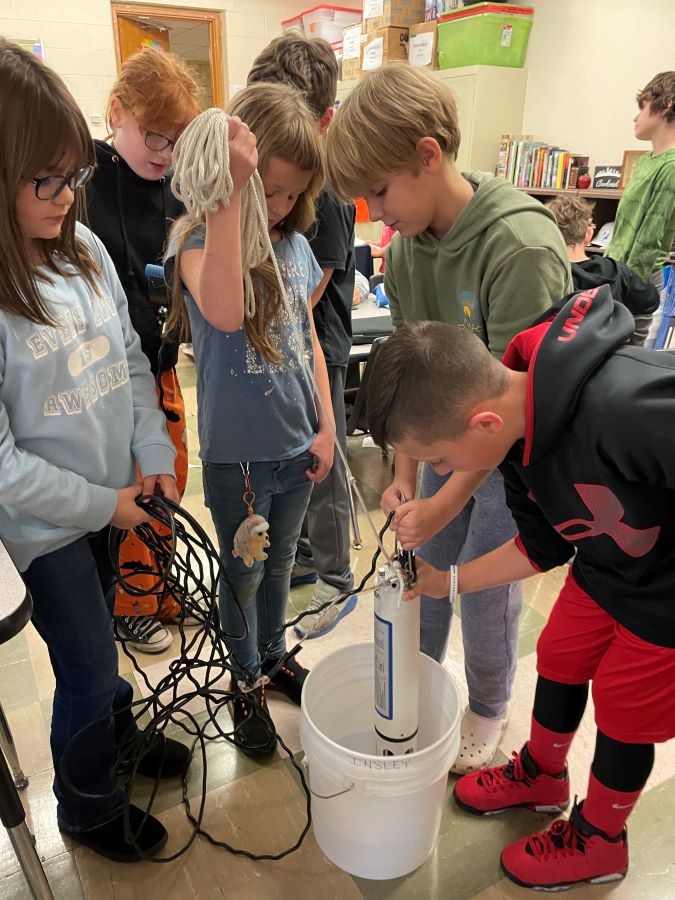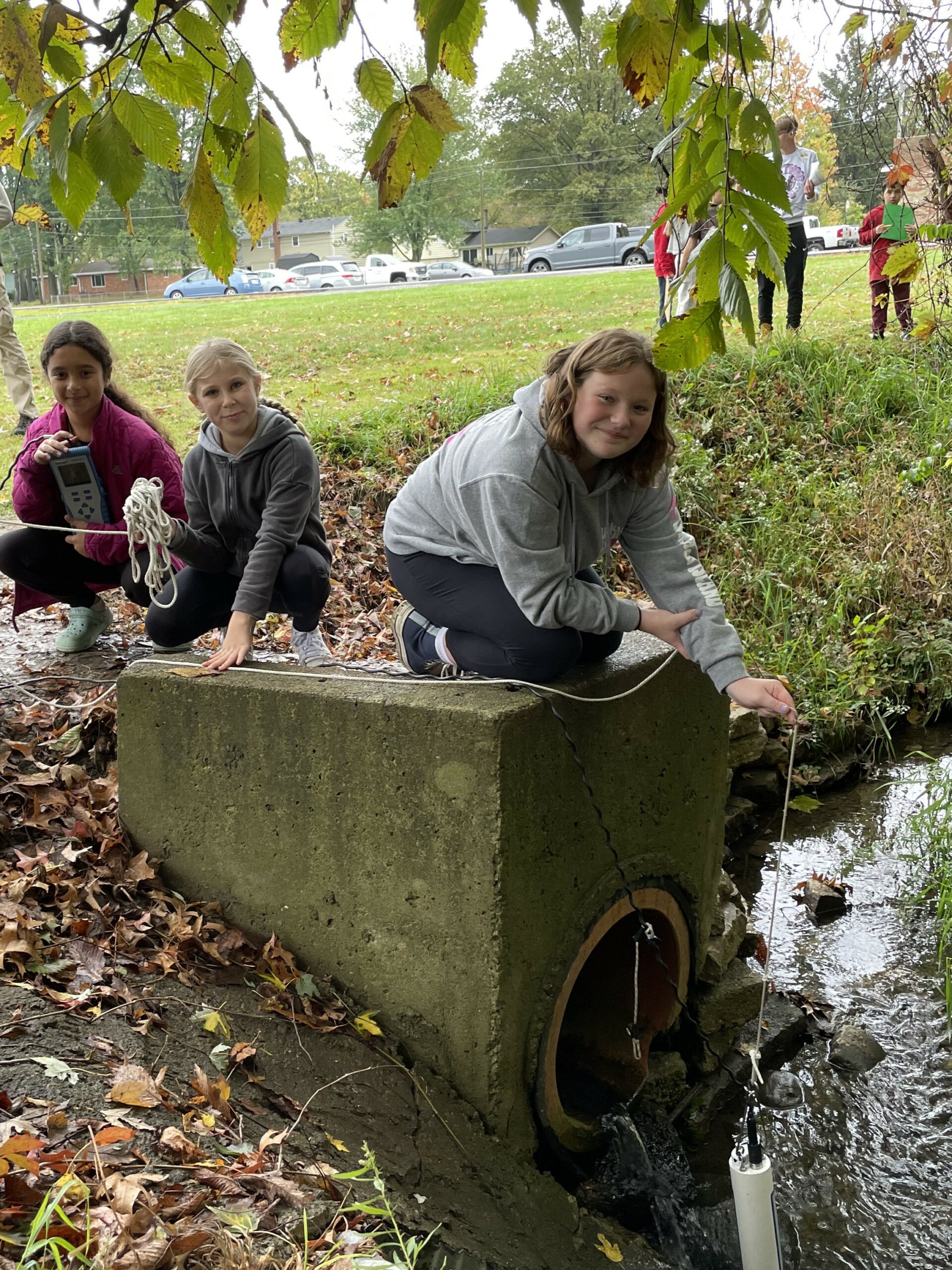
Elementary school students recording water quality data in the field.
This page provides data sheets, lesson plans, teaching resources, and NGSS connections that can support water quality investigations with upper elementary students. For questions about these educational resources or to share your own lessons with the Limno Loan community, please contact IISG’s Great Lakes educator.
Grades: 4–8
Time to Complete: 1–3 hours
This series of five lessons is from Fisheries Learning on the Web and was developed by Michigan Sea Grant. The first two activities allow students to predict, observe, and explain the movement of water. Lessons 3 and 4 discuss the relative availability of freshwater on the planet and why water quality is so important. In the final lesson, students have an opportunity to make their own decisions concerning water quality, land use, and the environment.
Grades: 4–8
Time to complete: 1 hour
This NGSS-aligned activity from Michigan Sea Grant helps students think about different ways to determine water quality. Students make observations and measurements of several water samples.
Grades: 5–7
Time to complete: 1–3 hours
This NGSS-aligned lesson is composed of two activities that allow students to explore thermal stratification and dissolved oxygen levels by graphing water quality data from Lake Erie.
There are many ways the Limno Loan program can support the NGSS. This is one example for 5th grade water quality investigations.
5-ESS3-1 Earth and Human Activity. Obtain and combine information about ways individual communities use science ideas to protect the Earth’s resources and environment.
ESS3.C: Human Impacts on Earth Systems. Human activities in agriculture, industry, and everyday life have had major effects on the land, vegetation, streams, ocean, air, and even outer space. But individuals and communities are doing things to help protect Earth’s resources and environments. (5-ESS3-1)
Obtain and combine information from books and/or other reliable media to explain phenomena or solutions to a design problem. (5-ESS3-1)
Systems and System Models. A system can be described in terms of its components and their interactions. (5-ESS3-1)
Science findings are limited to questions that can be answered with empirical evidence. (5-ESS3-1)
Students will be using water quality equipment to investigate water quality parameters in the field. Students will collect data using a sampling protocol.
Students will learn that human activities impact waterways through changes in chemistry or physical properties. Communities can monitor waterways over time to identify any changes that may indicate positive or negative human impacts to that waterway.
Waterbodies can be described by their chemical and physical properties. These parameters are measured in standard units and change over time.
Students can explain their observations about water quality as a result of human activities by evaluating water quality data. They can translate this information into a poster or another creative way to present what they have learned about ways to protect their local waterbody.
The following data sheets are from fellow Limno Loan educators and can be downloaded and revised to fit your needs.
Microsoft Word:
Google Docs:
Support learning and understanding of water quality parameters with the following tools.
Water Quality Parameters Primer
Each aquatic habitat is different, but this chart can be used as a generalized guide to assist students in interpreting ideal data ranges, danger readings, and causes of and remedies for water pollution.
These simple cards outline each of the seven water quality parameters that the Limno Loan program can help you measure. They can be printed and folded in half to create a set of flashcards that students can use in cooperative learning groups.


Limno Loan
c/o Illinois-Indiana Sea Grant
Purdue University
195 Marsteller Street
West Lafayette, IN 47907-2033
Phone: 765-496-6009
Email: iisg@purdue.edu
This program is administered by Illinois-Indiana Sea Grant and funded by the Great Lakes Restoration Initiative via cooperative agreement between the U.S. EPA Great Lakes National Program Office and the National Oceanic and Atmospheric Administration.
© 2023 Illinois-Indiana Sea Grant.
All Rights Reserved.
Illinois-Indiana Sea Grant strives to ensure equal access and an inclusive environment.
Designed by Studio 2D